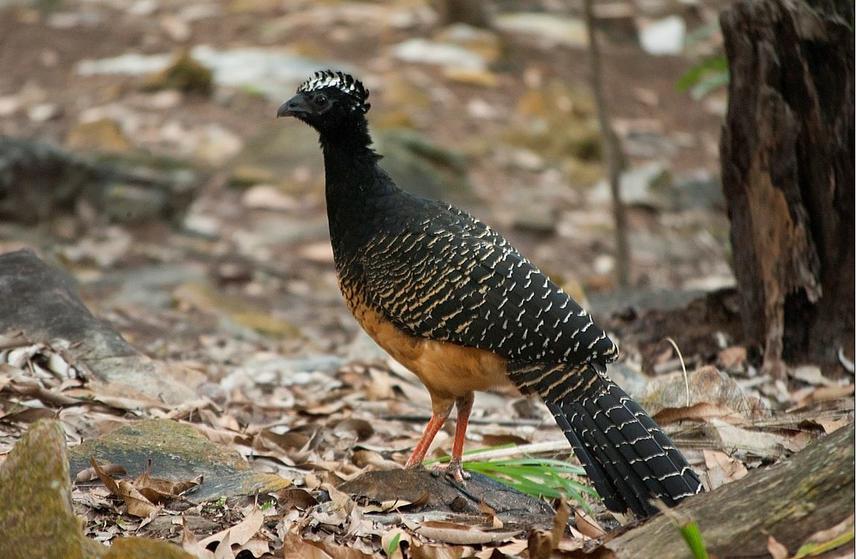Sofía Zalazar
The aims of this project are:
1- To generate information on the spatial distribution of the last Argentinean populations of the Bare-faced Curassow and its threats,
2- To know the local people´s perception and use of this species and its habitat,
3- To identify priority areas for its conservation.

The Bare-Faced Curassow (Crax fasciolata) is the largest frugivore bird of Argentina. Its body size and its ecological characteristics make it a key species, which can intervene in the processes of regeneration and maintenance of riparian forests through the dispersal and predation of large seeds. However, its current situation is very critical, because, like many of its relatives, it is a highly valued species for its meat, and it is relatively easy to hunt. This fact, in addition to the accelerated degradation of the forests it inhabits, has led to a drastic reduction of its populations. It is therefore categorized as "Vulnerable" globally, was declared as "Endangered" in Argentina and is classified as "high conservation priority" in the Cracid Action Plan of the IUCN.
The study will take place in the riverine forests along the rivers of the Humid Chaco Ecoregion, mainly the Monte Lindo and Pilagá rivers in Formosa, Argentina. Although these forests do not exceed a width of 1000 meters, this is the habitat with the highest Humid Chaco biodiversity. This forest produces fruits, flowers and leaves throughout the year, which allow the coexistence of a great diversity of wildlife, thus concentrating many populations of endangered species of the country. At the riverbanks of the rivers studied there are two small communities: Mojón de Fierro and Colonia Dalmacia, where, respectively, 200 and 30 families live. These communities live mainly from subsistence hunting and transitory jobs, such as selective logging, thus making them potential key players in the conservation of this ecosystem.
With this project we are studying the forest use and spatial distribution of the remaining Argentine populations of Bare-faced Curassow, focused on understanding its threats, and identifying priority areas and solutions for its conservation and management. At the same time, through workshops and interviews, we seek to know the perception and use that the local people give to this species and its habitat, and to spread its conservation issues. The bonds created with the local communities and authorities, along with the new information gathered, will enable us to efficiently contribute to the planning of protected areas, encourage the development of conservation projects involving local people and promote action plans for the Bare-faced Curassow's conservation in Argentina.